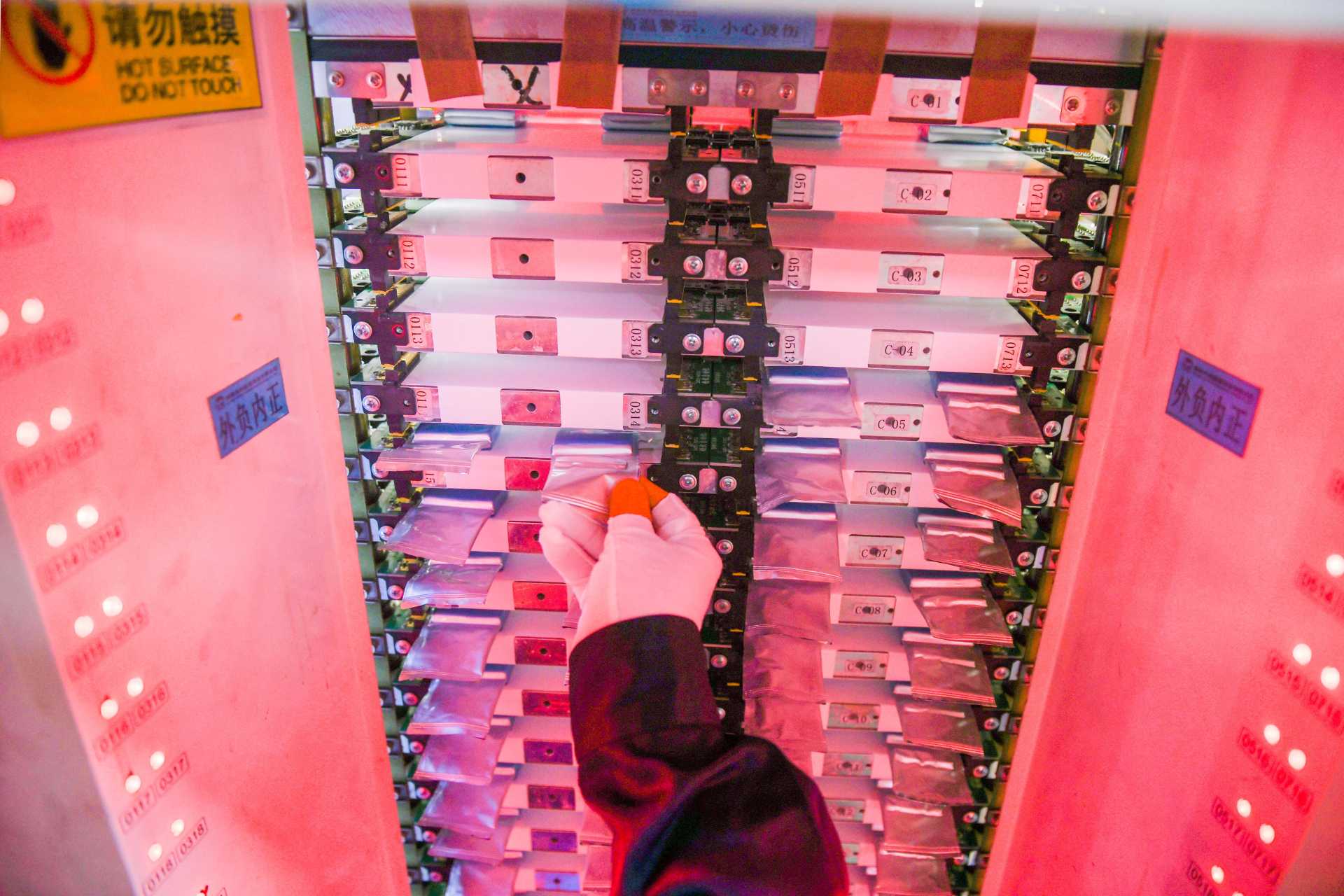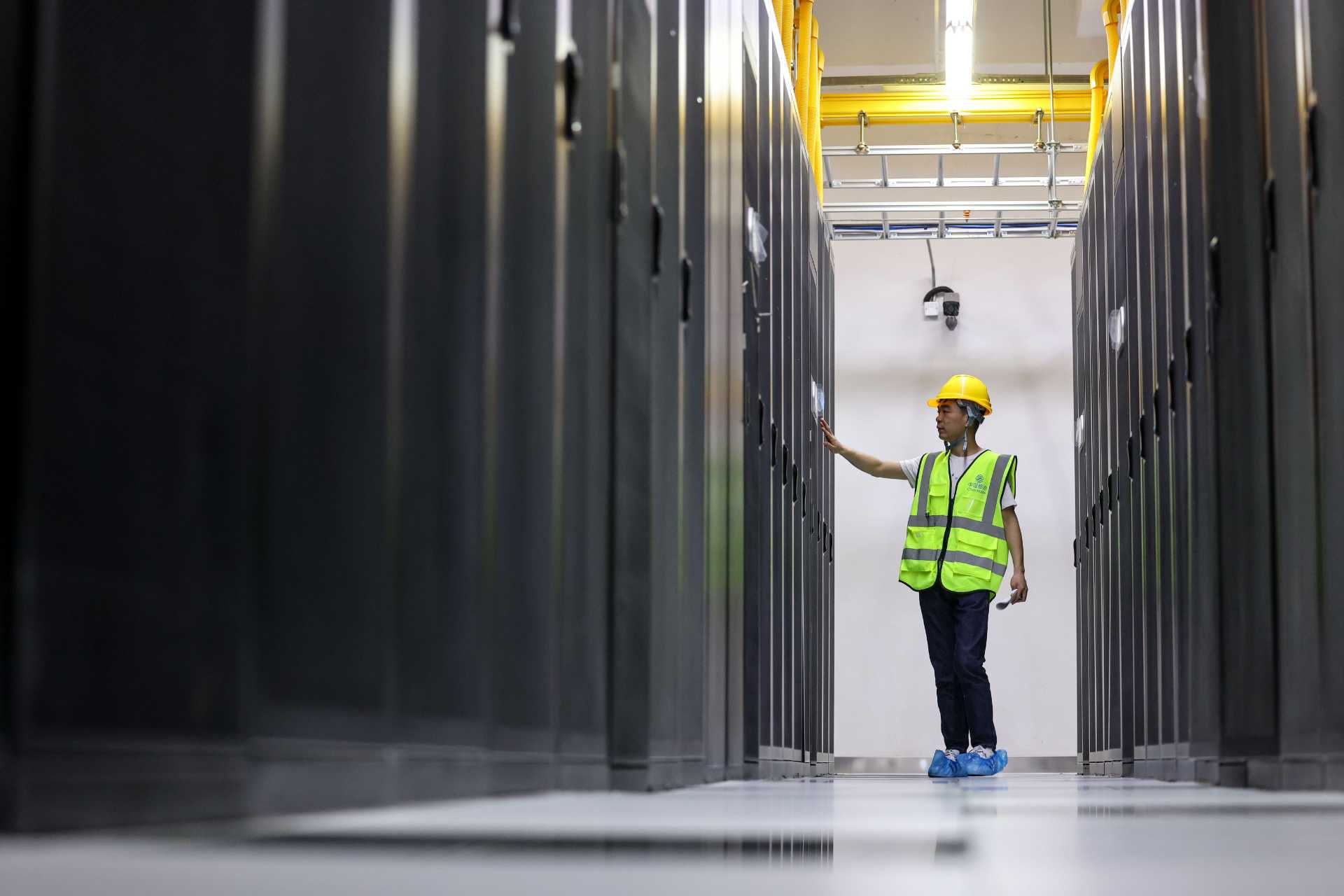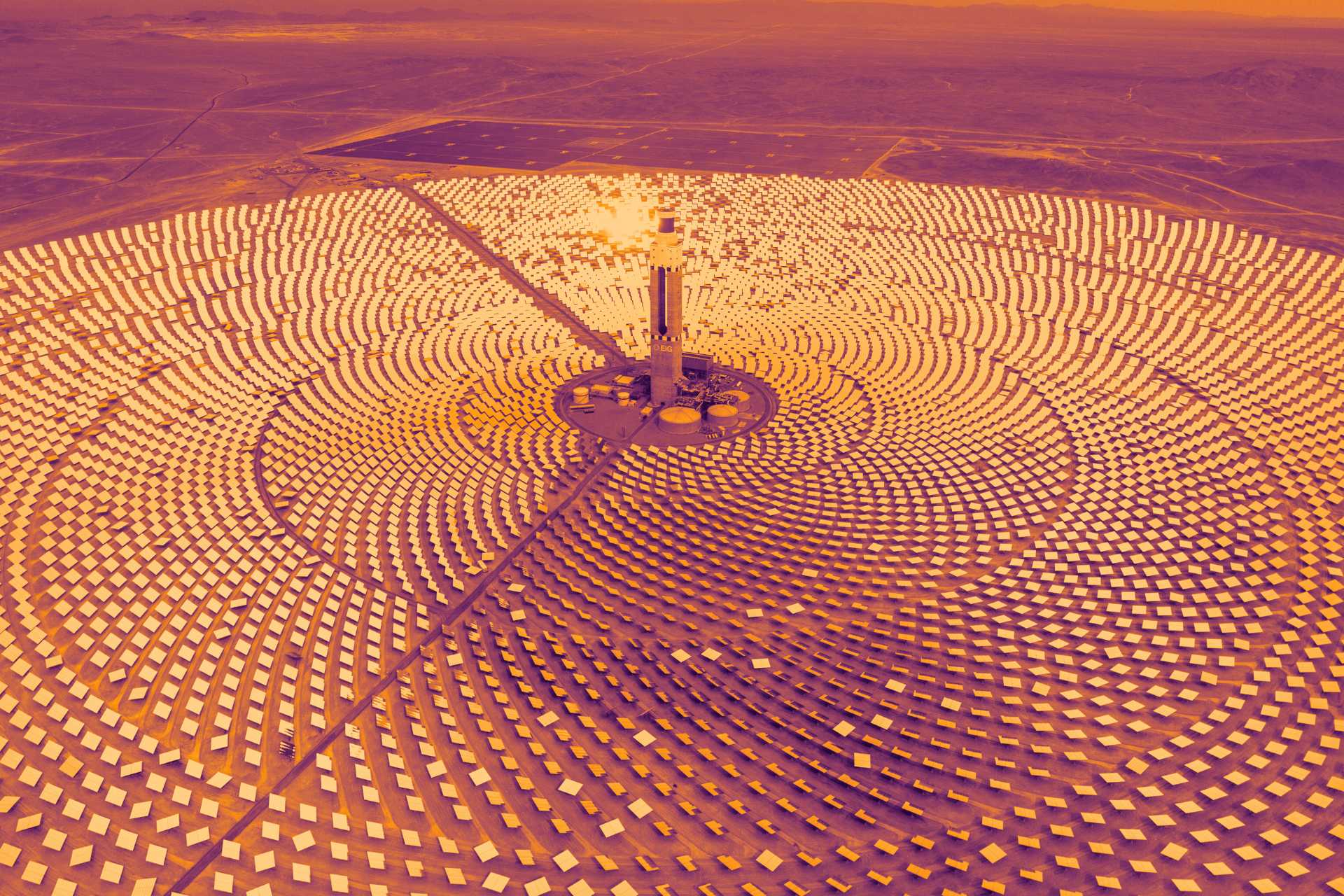
Get the latest climate technology news directly to your inbox.
The challenging economics of battery recycling
Columbia University's Dan Steingart talks about the shortage of end-of-life lithium-ion cells — and why battery recycling is hard right now.

A worker on a lithium-ion battery production line in China. Photo credit: Costfoto / NurPhoto via Getty Images

A worker on a lithium-ion battery production line in China. Photo credit: Costfoto / NurPhoto via Getty Images
Dan Steingart is all for battery recycling, in theory. In practice, through, he’s skeptical that there’s enough of a business case, at least until there are more used batteries to recycle.
The researcher, who is the chair of the earth and environmental engineering department at Columbia University, spoke on a recent Catalyst episode about the challenging economics of recycling lithium-ion cells. And the biggest problem right now for the big three U.S. recyclers — Redwood Materials, Ascend Elements, and Li-Cycle — is that there aren’t enough end-of-life batteries to go around.
“Currently, all three of these companies are living off of gigafactory scrap, which is exceptionally high: over 20%, as I understand it,” said Steingart. “I worry about the business case here because the gigafactories have every incentive in the world to minimize this amount of scrap.”
The primary driver of the shortage of feedstock is that batteries are lasting longer than expected. So recyclers supplement their supply with waste material from battery cell manufacturing.
Steingart argued that battery manufacturers will reduce waste over time. As manufacturing scrap rates fall, and end-of-life batteries remain hard to come by, he predicted that recyclers will have to take stock of their limited supply.
“We don't want batteries to die. So every recycler is going to have a lean period as scrap rates go down,” said Steingart. “We hope scrap rates go down because they're wasteful, but we also hope batteries last a long time. So there's going to be a bit of a lean period before [recyclers] can be fully engaged in recycling.”
The short supply of feedstock contributes to another challenge for battery recyclers: tight margins. Because battery manufacturers are both key suppliers and primary customers of the recycling companies, Steingart argued that recyclers are squeezed on both sides of the market.
“You're going to have massive margin pressure from all the battery suppliers who are facing massive margin pressure from their OEMs,” or original equipment manufacturers, like Ford, General Motors, and Tesla, he said. Recycling is “ultimately something where it's squeezed from the upstream and downstream, and there's very little margin allowed on either end,” he added.
As a result, recyclers are likeliest to reap rewards in short periods of technological advancement — assuming they can keep costs down.
“And every time there's an advance that lowers the cost of recycling, there will be a year or two where that provider gets to benefit from that extra profit,” he added. “But then the market will expect lower prices going forward, particularly as we need cheaper and cheaper batteries.”
From podcast ads to drop-in episodes, see how you can position your brand as a thought leader on the Catalyst and Carbon Copy podcasts.

From podcast ads to drop-in episodes, see how you can position your brand as a thought leader on the Catalyst and Carbon Copy podcasts.

From podcast ads to drop-in episodes, see how you can position your brand as a thought leader on the Catalyst and Carbon Copy podcasts.

From podcast ads to drop-in episodes, see how you can position your brand as a thought leader on the Catalyst and Carbon Copy podcasts.

A second life for batteries?
Steingart is also skeptical about the logic of giving batteries a second life. The equipment degrades over time, but before being recycled they are still usable in other applications, such as stationary storage.
But he’s not sure there’s room to scale up these second uses. .
“It's typically pretty difficult to justify the cost of grading these cells and estimating their second life,” Steingart said. “We do a fair bit of that in my lab and I have to say, to date, I think that it's probably not a bankable effort yet.”
Part of the challenge is the difficult measurement, or metrology, of how well old batteries will perform: “I'm not sure that even if we had perfect metrology to understand the second life of cells, we would actually want to put them into that application,” he said.
That’s not stopping many companies, like Mercedes and Nissan, from trying. The utility Enel has attached used batteries to an oil power plant in Spain; the startup B2U has deployed a 25 megawatt-hours of storage at a solar plant in California using 1,300 used batteries; and last fall Element Energy raised $100 million for second-life battery management systems.
The potential of solvent extraction
When batteries can’t be used for a second life in the United States, there are two main routes for recycling them. Pyrometallurgy, in which batteries are broken down with heat, is common in China, whereas recycling in the U.S. uses hydrometallurgy. In the latter, batteries get shredded into a mix of minerals called black mass, from which recyclers extract valuable minerals, like lithium, cobalt, and nickel.
One common recycling method involves extracting solids from the mass in a hydrometallurgical process called precipitation. Steingart said that this process is the “cheapest way of doing things” but has drawbacks. He prefers an alternative approach called solvent extraction, which is common in copper refining. It involves using chemical solutions to extract minerals in liquid form, he said, so that recyclers are left with a metal sulfate: “this is exactly what battery companies want for recreating, in particular, cathode material.”
However, Steingart said he’s “in the minority” in the field for his bullishness on solvent extraction, in part due to the lower capital expenditure of precipitation.
“You just need fewer reactors and fewer reagents and less complex loops,” he said. “In my experience though…running steady-state solvent extraction has much lower [operating expenditure].”
He argued that solvent extraction “needs further work” but has a lot of potential.
Direct recycling for LFP
Steingart said that most of the existing recycling technologies are best suited for NMC, or nickel-manganese-cobalt, the chemistry that has dominated the domestic battery market for years.
“I think that for NMC compounds, it's really difficult,” he said. “It's just cheaper and safer…to break it down to sulfate or something similar or in a mixed hydroxide precursor and build it back up.”
But the alternative chemistry LFP, or lithium-iron-phosphate, is quickly overtaking global lithium-ion battery market, growing from 5% of gigawatt-hours sold in 2019 to an estimated 42% in 2023, according to BloombergNEF.
Steingart said that rather than shredding batteries into black mass, a better recycling process fit for LFP may be something called direct recycling, which extracts minerals without changing their chemical composition. He said that direct recycling has a low technology readiness level, but it’s an “exciting” option for LFP because it “doesn't change its molecular composition all that much as it cycles.”
“For those that know me and get a beer with me after conferences, they're probably doing a spit take because I'm pretty skeptical of direct recycling in a lot of ways,” he said. “But I think for LFP to be economically viable, direct recycling likely has to be the option.”
Listen to the full episode of Catalyst:





.jpg)